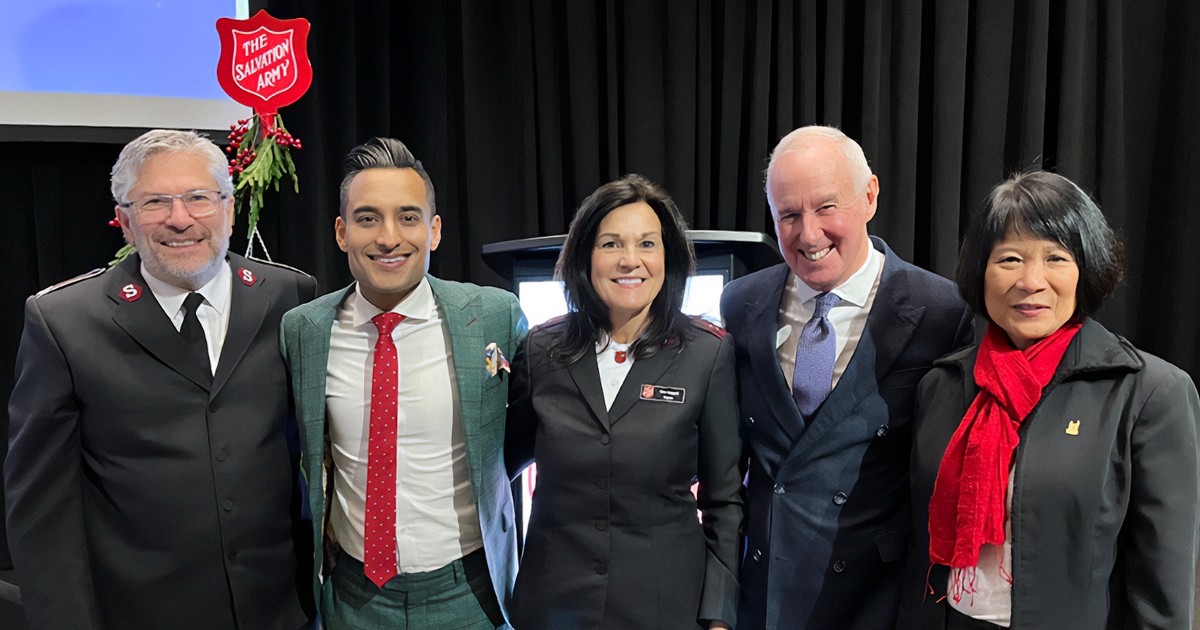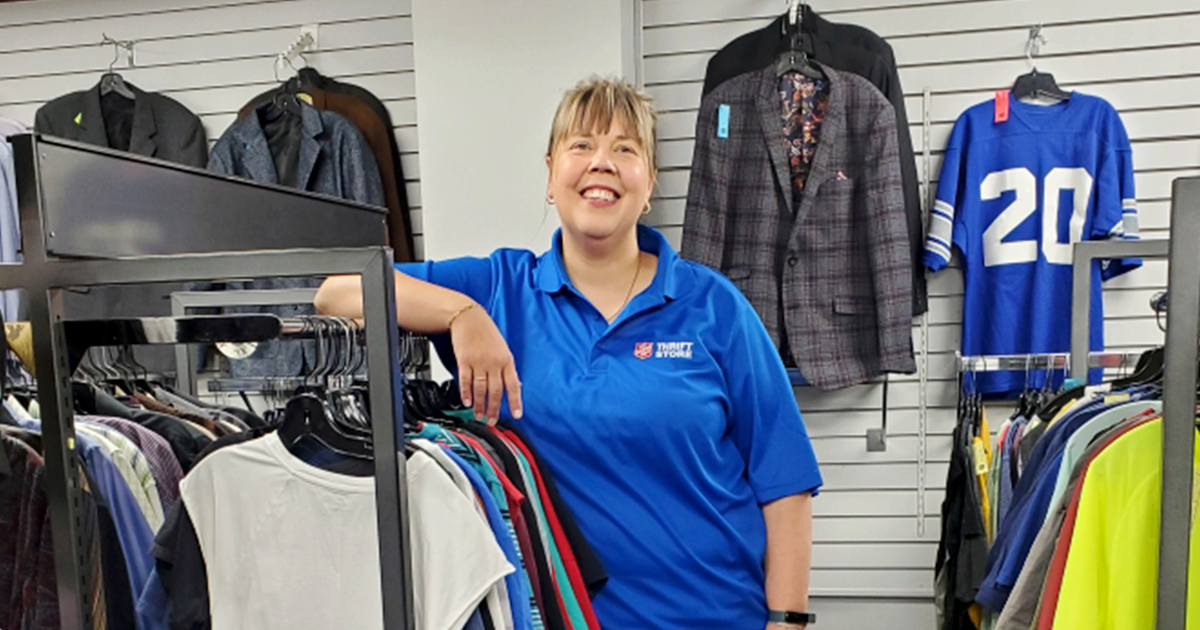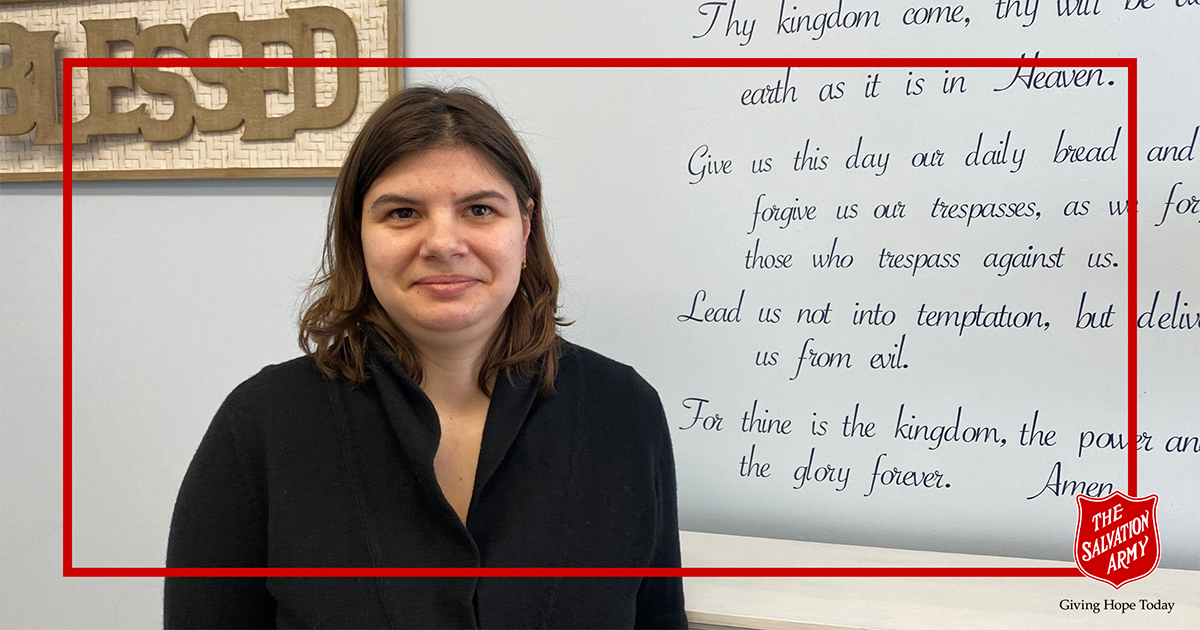Imagine a knock on your door in the dead of night. The acrid smell of smoke hangs in the air, and you're told you only have 10 minutes to get out. What do you grab and what do you take, not knowing when you'll be back or even if your home will still be there when you do?
Short Notice
That's a question that thousands of people in Alberta, Saskatchewan and British Columbia faced this past summer, as an unusually high number of forest fires swept across the western half of the country.
Dealing with the repercussions of that 10-minute question was just one of the things Perron Goodyear dealt with as part of The Salvation Army's response to the disaster.
Perron is the divisional director of emergency and disaster services for the London and Windsor region of Ontario. He headed west this past July to provide additional support to The Salvation Army's efforts in Saskatchewan.
Having previously deployed to disasters as close to home as the 2011 Goderich, Ont., tornado and relief efforts in the United States after hurricane Ike in 2008, what he found on the ground in Saskatoon came as little surprise.
“Our role was to provide meals three times a day and snacks,” he says. “We were also providing clothing, which we did through vouchers. Then folks were able to visit our thrift store in town.”
Trying to assist evacuees with as much support as possible, The Salvation Army also arranged for other necessities such as laundry, baby formula and toiletries. Perron noted that despite the advance warnings, many of those who arrived at the centre had little more than a bag of belongings, having been forced to leave their homes in just minutes.
“With the fire situation in flux day after day,” Perron says, “evacuees had no idea if it was going to be three days or three weeks before they could return to their communities—if they had a home to go back to at all.”
Taking Precautions
When disaster strikes, many people think they can take care of themselves and are prepared for almost anything that comes their way. Perron disagrees.
Even though many agencies try to encourage awareness through events such as Emergency Preparedness Week, Perron feels there's a sense of complacency where people feel “something like that is never going to happen here.”
With more severe weather watches and warnings occurring now than in the past, it's important to educate the public on knowing the difference between the two and taking it seriously.
“A watch is saying that the conditions are right for severe weather, a warning means it is occurring or imminent,” he says. “We recommend that people be prepared to be self-sufficient for up to 72 hours after something strikes. It could take that long for emergency personnel to get to you, depending on the severity of the situation.”
To help do that, Perron advises compiling a basic emergency kit, which includes not only food and water but also items such as a manual can opener, extra batteries and even cash.
“While The Salvation Army does its best to be ready and to support as many people as possible when disaster strikes, it's important that people are ready to take care of themselves first,” says Perron.
Basic Emergency Kit Items
(Reprinted from London Community News, August 16, 2015)
Short Notice
That's a question that thousands of people in Alberta, Saskatchewan and British Columbia faced this past summer, as an unusually high number of forest fires swept across the western half of the country.
Dealing with the repercussions of that 10-minute question was just one of the things Perron Goodyear dealt with as part of The Salvation Army's response to the disaster.
Perron is the divisional director of emergency and disaster services for the London and Windsor region of Ontario. He headed west this past July to provide additional support to The Salvation Army's efforts in Saskatchewan.
Having previously deployed to disasters as close to home as the 2011 Goderich, Ont., tornado and relief efforts in the United States after hurricane Ike in 2008, what he found on the ground in Saskatoon came as little surprise.
“Our role was to provide meals three times a day and snacks,” he says. “We were also providing clothing, which we did through vouchers. Then folks were able to visit our thrift store in town.”
Trying to assist evacuees with as much support as possible, The Salvation Army also arranged for other necessities such as laundry, baby formula and toiletries. Perron noted that despite the advance warnings, many of those who arrived at the centre had little more than a bag of belongings, having been forced to leave their homes in just minutes.
“With the fire situation in flux day after day,” Perron says, “evacuees had no idea if it was going to be three days or three weeks before they could return to their communities—if they had a home to go back to at all.”
Taking Precautions
When disaster strikes, many people think they can take care of themselves and are prepared for almost anything that comes their way. Perron disagrees.
Even though many agencies try to encourage awareness through events such as Emergency Preparedness Week, Perron feels there's a sense of complacency where people feel “something like that is never going to happen here.”
With more severe weather watches and warnings occurring now than in the past, it's important to educate the public on knowing the difference between the two and taking it seriously.
“A watch is saying that the conditions are right for severe weather, a warning means it is occurring or imminent,” he says. “We recommend that people be prepared to be self-sufficient for up to 72 hours after something strikes. It could take that long for emergency personnel to get to you, depending on the severity of the situation.”
To help do that, Perron advises compiling a basic emergency kit, which includes not only food and water but also items such as a manual can opener, extra batteries and even cash.
“While The Salvation Army does its best to be ready and to support as many people as possible when disaster strikes, it's important that people are ready to take care of themselves first,” says Perron.
Basic Emergency Kit Items
- Two litres of water per person per day. Include small bottles that can be carried easily in case of an evacuation order.
- Food that won't spoil such as canned food, energy bars and dried food. Remember to replace the food and water once a year.
- Manual can opener.
- Flashlight and batteries.
- First-aid kit.
- Special item needs, such as prescription medications, infant formula or equipment for people with disabilities. Extra keys for your car and house.
- Cash such as small bills—travellers cheques are also useful—and change for payphones.
(Reprinted from London Community News, August 16, 2015)










Leave a Comment